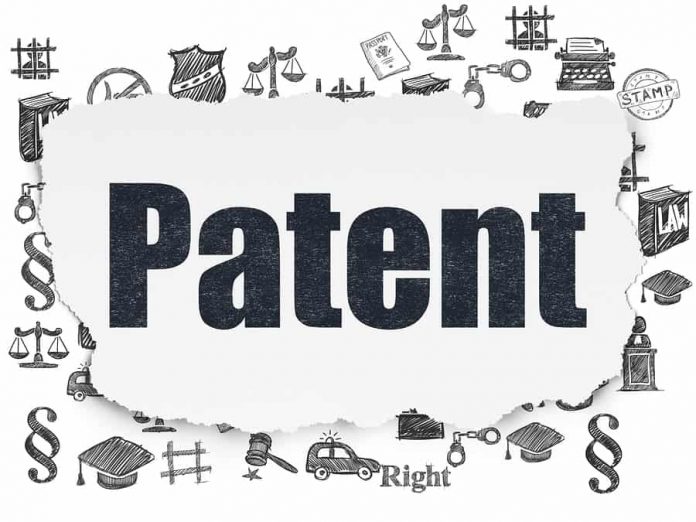This article is written by Shiwangi Singh, a law student from Banasthali University. It provides a summary of importance of design patents and the laws that protect designs of various inventions. It discusses difference between different types of patents and trademarks and the advantages one gets from issuing a design patent.
It has been published by Rachit Garg.
Table of Contents
Introduction
The word ‘patent’ is defined as an exclusive right or license that is granted by the government to a person who has invented something that could result in a new experience in today’s world. The government gives us the authority to protect our product or the process of our manufacture by prohibiting anyone from copying, utilising, and selling one’s invention. It gives the inventor a kind of monopoly right on his invention. A patent is also available for improvement in their previous invention.
Out of all such patents, there stands the term ‘design patents’ which play a very crucial role in our daily lives. A design patent is issued to secure legal protection for different visual features of a manufactured item, which means it protects the ornamental design of something that has a practical utility. It provides protection for the outward appearance of an invention so that no one can copy the exterior ornamentation of a specific product. It secures the new idea of an inventor.
If one feels that his or her design for their product is really different and new for the first time, then they could preserve it under a design patent so that no other competitors could replicate that same design for their own benefit. The design should be unique and has never been used before.
Here we are going to deal with different types of patents, trademarks, and various laws provided by the Indian legislature that are helpful in protecting new inventions, ideas, and designs. The procedure of how a design patent is being registered, the remedies that one can have in case of infringement of their designs or ideas.
Origin and background of design patents
The first legislation in India regarding patents was Act VI of 1856. The main aim of this law was to encourage people to invent new things and manufacture new useful materials. It was also aimed toward disclosing the process of invention or the idea of an invention that an inventor has behind his creation. This Act was further modified and was introduced as XV Patent monopolies in 1859, which gave exclusive privileges to the inventor that included one who could sell, make, and use his or her invention in India for 14 years from the date the invention was registered.
In 1872, the Act of 1859 expanded its scope and included protection related to designs. Its name was further changed into ‘The Patterns and Designs Protection Act’ under Act XIII of 1872. This Act was further amended to provide protection for the novelty of the invention. This Act remained effective for about 30 years without any further changes, but in the year 1833, some changes were introduced in patent laws in the United Kingdom, which made it obligatory to sync the same changes in the patent laws of India.
The Indian Patents and Design Act, 1911, replaced all previous Acts. For the first time, the authority for patent administration was brought under the management of the Controller of Patents. After India gained independence, it was felt that the Indian Patents & Designs Act, 1911, was not very effective and needed a replacement with better useful provisions. Comprehensive patent laws were required so as to meet the political and economic conditions of the country at that time. Therefore, the government of India appointed a committee under the chairmanship of Justice Dr. Bakshi Tek Chand, a retired judge of the Lahore High Court, in 1949 to review all the patent laws in India and reform them according to the country’s national interest.
Global status of design protection
In China, the designs are protected under the Patent Law of the People’s Republic of China. Chinese design patents do not undergo substantive examination. If the application fulfills the required formalities, then a patent is issued within 6 to 12 months, and these design patents are applicable for a period of 10 years from the date they were registered.
The European Union is governed by the European Community Designs Regulation and Designs Directive. It is one of the most developing forms of design protection in the world. Under this regulation, protection for designs is provided for a period of five years along with the option of four consecutive extensions of years, which would require some fee submission that results in 25 years of protection in total. It provides design protection for the appearance of the whole part of the product that may comprise lines, contours, shape, texture, ornamentation, the product’s colour, the inside design of the product, and even the spare parts. Graphic symbols like computer icons are also protected under this regulation. Similar to design patents in China, European community designs are not subject to examination, but to get a patent the design has to be new and should possess ‘individual character’. The EU Design Regulations also provide protection for unregistered designs for a period of three years following their public disclosure.
In Japan, design patents undergo a substantive examination. The requirements for registration include both industrial utility and novelty. The law clearly states that the design must be “innovative and without precedent”. In Japan, designs are protected under the Designs Act. It deals with various aspects like design registration, application for design registrations, examination of the designs applied for, design rights, infringement of rights, and trials related to them in different chapters of this act. Japanese design patents are registered for a period of 20 years and make no provision for renewing the patent.
Designs are also eligible for design patent protection in the United States. In the U.S., design patent applications are subjected to examination for novelty and other standard requirements. Section 171, of Title 35 of the United States Code, authorises the granting of patents for design subjects. The authority assigned for the registration of design patents is the United States Patent and Trademark Office (USPTO), which regulates the registration process. The design patent is valid for 15 years in the U.S.
Advantages of issuing a design patent
- Design patents are usually less expensive as compared to the other two patents which are utility and plant patents.
- By applying for a patent for a design, one can safeguard their idea from being replicated by others.
- Design patents require no maintenance fees, which is paying a certain amount of money for a prescribed period of time to keep your design secure for a long time if it gets issued as a patent.
- Design patents are granted to the inventors quite easily and are obtained quickly.
- They prevent the infringement of product designs.
- It provides security to the brand of the product as well, so that others can’t earn a profit from the original designs and increase the potential market share of the brand.
Difference between design patent and utility patent

| Design Patent | Utility Patent |
| They are meant to protect the ornamental features of a product, such as its shape, configuration, nature of its surface, and overall external appearance. | They are meant to protect unique ideas or inventions. It provides a person full control over his or her invention. |
| It is only inclined towards protecting the design of a product, safeguarding the way it looks. | It protects the functional aspects of a product, which are the way a product works, is used, and the way it operates. |
| It has unique visual features like the product can be cylindrical or rectangular or might have designs on its surface like ridges or curves. | It deals with the unique composition, method of manufacturing, or process. |
| It requires less expenditure to get a design patent. | It is more expensive than a design patent. |
| As this patent deals with only the outer look, it is less valuable. | As it deals with the process of making a product, it holds more value because the functionality and the way it would be utilised are the hardest parts to create. |
| Design patents are granted much faster. | Utility patents are not granted that easily. |
| For example – iPhone has a design patent over the design of its phone, which has distinctive features like rounded corners and a rectangular screen surrounded by a space in between the screen and the frame of the phone. | For example – a new iPhone app, which is both a machine and a process. |
Difference between design patent and trademark
| Design Patent | Trademark |
| It is a whole diagrammatic representation of a product. | It simply signifies a mark that represents a distinct trade that could be a logo, word, shape of a word, etc. |
| To protect a design, patent registration is done. | To protect a distinguishing mark, trademark registration is done, to protect them from infringement. |
| It is protected under the Designs Act 2000. | It is protected under the Trademark Act of 1999. |
Designs Act, 2000
The Designs Act, 2000 was introduced to consolidate and amend the law relating to the protection of designs. It was published in the Gazette of India and became effective on 12 May 2000. It extends to the whole of India.
The term ‘Design’ means features of shape, pattern, configuration, ornament, or composition of colours or lines which are applied in three dimensional or two dimensional or in both forms using any of the processes, whether manual, chemical, mechanical, separate, or combined, which in the finished article appeal to or are judged wholly by the eye as per the Design Act.
Objectives of the Design Act
- The prime objective of the Design Act is to protect designs.
- It protects new and original designs from getting copied.
- It regulates and keeps a check on creations so that no fraudulent activity can snatch away the credit from the creator, originator, or artisan.
- An attractive design draws customers’ attention and helps in increasing the commercial value of an article. Therefore, it helps in expanding the market for the product.
- It safeguards the interests of the owner by providing them with laws for different situations that might result in the misuse of their designs.
The famous Coca-Cola bottle
The Coca-Cola bottle is one of the first examples of a beverage company that differentiated bottle design by its packaging. It was patented on November 16, 1915, and is still recognizable today.
Infringement of design
When a new design gets registered according to the procedures laid down by the law, the owner of the design gets exclusive rights to stop fraudulent copying of imitation by others, which allows the owner to protect the brand and position in the market by enjoying the profit earned on that particular product.
An infringement of a registered design occurs when a person, without the consent of the proprietor of the design, uses the design for its own profit by importing, publishing, or using it for fraudulent purposes, which would result in the degradation of the brand value of the original design.
If a design is copied for personal use but does not have any intention of being put on sale, then it would not be considered an infringement.
Section 22 of the Designs Act, 2000 talks about the piracy of registered designs. It mentions the grounds for infringement of design, it states –
- If the design is used for any fraudulent purpose or obvious copying of a design that has already been registered without the consent of the registered owner or the proprietor of the registered design is unlawful.
- One cannot import any article without the consent of the registered proprietor, or copy the design.
In Cello household products vs. Modware India, (2017) the plaintiff, which was the Cello company, registered a case against Modware India, stating that the bottle manufactured by the Modware company under the name ‘Kudoz’ was similar to their bottles manufactured under the name ‘puro’. The bottles in the Puro series had unique and distinctive features, which included an oval-shaped curve with a flip cap, and these bottles were tinted with a specific combination of two colours. The defendant was accused of using a similar get up and colour combination. In this case, the Bombay High Court decided in favour of the plaintiff and granted an injunction to them by stating that the products and the design must be seen as a whole, from the perspective of a common consumer, so if the visual appeal seems similar, it would mean that a design is being copied in an unlawful manner.
In Castrol India Ltd. vs. Tide Water Oil (2011), the petitioner filed a complaint regarding the copying of the design of their specially designed container, which looked similar to the respondent’s automotive lubricant container. The Court, while deciding on this case, described various tests to decide whether a design is imitated or is a pirated version of the registered design. The Court held that
- The word ‘imitation’ does not mean duplication, and the design which is accused of being copied does not require to be an exact replica.
- The similarity or the difference will be judged by the sight, through the eye of the purchaser.
Remedies for design infringement
The designs are prone to infringement that can be copied by competitors or some other person, in such cases the owner of the design can claim damages and can also apply for an injunction that would authorize them to stop a company or individual from replicating their designs. The Design Act, 2000 mentions the provisions if someone violates the law and tries to infringe on an original design under Section 22(2).
- Under Section 22(2)(a), one who infringes the design shall pay a sum of not exceeding twenty-five thousand rupees to the registered proprietor.
- Section 22(2)(b) mentions that the owner of the registered design can also file a suit for recovery of the damages and can plead for an injunction.
Requirements for getting a design patent

The design on which one wants to get a patent must be really new and unique in the market. Since design does not define the functionality of a product, the courts do not consider the novelty of the design if it lacks certain features.
In Gammeter vs. The Controller of Patents (1917), the Calcutta High Court mentioned that the test of novelty for a design should be done by pacing the two designs side by side and then deciding whether the one for which novelty was claimed was in fact new. It was further observed that it was a matter of first impression.
In Steel bird Hi-tech India Ltd. vs. SPS Gambhir (2014) the Court clearly declared that any design which seeks a patent registration should be new or original as it is considered a product of the intellectual outcome of its creator. The Delhi High Court stated that the design proposed for registration should not be present in the physical or tangible form before the registration process.
Other requirements
- The new product must possess some originality in terms of its shape and size. The composition of the product might remain the same but its new shape must make it appear different.
- The patentable design must be original to be valid.
- Most of the courts hold an opinion that if any product has no unique shape or appearance at the time of its creation, that would mean that it lacks ornamentality and therefore would not be eligible to get a design patent.
- Non-obviousness of the invention is also a major requirement for the grant of the patent, it means that the invention shall not be obvious or apparent to an ordinary skilled person in the field related to the invention.
Section 4 of the Designs Act mentions the prohibition of a design if –
- The design is not new or original.
- If the design is being disclosed in India or outside India before it was filed for an application for patent.
- If the design looks similar to other known designs or a combination of known designs.
- If the design contains obscene or scandalous matter in it.
Chapter II, Section 5 of the Designs Act 2000 deals with the registration of designs. The owner of the product must submit a complete application form according to the requirements mentioned in the Indian Designs Act 2000, along with other information which is:
- There should be two copies of six images of the article, from the rear, front, top, bottom, left side, right side angle and also from the perspective view of the article.
- The applicant shall write the correct name and address.
- The applicant shall give a proper legal document that would mention he or she is an individual, company, etc.
- The required official fee for the design application shall be submitted.
- The article to which the design will be applied, for which the design has actually been thought about.
- The plan describes the utility of the product.
The registration process for design patents in India
Chapter II of the Indian Designs Act, 2000 deals with the registration of designs (Section 3 to Section 10)
- The Controller has the authority to register any new or original design which has not been previously published in the country or is not contrary to public order or morality, if an application is made by any person who claims to be the proprietor of that particular design.
- The Controller then refers the application to an examiner for proper examination to check whether that design is capable of being registered under this Act. The Controller will abide by the reports sent by the examiner.
- Every application form for getting a patent shall be filed in the Patent Office in a prescribed manner and by paying the prescribed fees.
- A design shall not be registered in more than one class, in case of doubt regarding in which class the design shall be put, the Controller may decide the question.
- If the controller, after proper inspection, feels that the design is not appropriate for being registered, then he can reject the application. However, the applicant can appeal to the High Court after the refusal.
- If an application is not completed due to some neglect or default within the prescribed time, then it would be considered abandoned.
- If a design gets registered, then the date mentioned for it should be the date of the application for registration.
- After this, soon after the registration of a design, the designer shall publish the prescribed particulars of the design so that the public may inspect the design and verify it.
- If after public inspection, no issues arise, then the Controller shall grant a certificate of registration to the proprietor of the design when registered. In the event that the original certificate is lost, the controller shall issue one or more copies of the certificate.
In the patent office, a book called the register of designs is kept, which maintains the names and addresses of the proprietors of registered designs, notifications of assignments, and transmissions of registered designs, and such registers may be maintained wholly or partly on computers or floppies, to secure the safety of the data stored. The register of designs shall act as prima facie evidence in any matter that might occur in the future.
Conclusion
A design signifies the creative process of someone, which further becomes a product. The design of any product has a long-lasting effect on the consumer’s mind. It helps them recognize a product. Therefore, it becomes necessary to register a design to provide it with legal protection under the Design Act 2000, which would protect it from infringement and secure the idea and the process of creation for the product owner.
The main objective of issuing a patent is to encourage the creators to contribute more in their respective fields. It gives them a designation for their invention, which further boosts them to innovate more. Patents could be issued for various things, which could be a machine, an article of manufacture, or a composition of the machinery object.
A design patent protects only the ornamental manifestation of an invention, not its features or the way it would be used. A design patent is even granted to a person who has an imaginary new idea regarding any product that he wishes to create and has no solid concrete vision of design or no obvious ornamental design for an article of manufacture. The design patent protects only the appearance of a product, but not its architectural or compositional, structural or functional features. It is a kind of industrial design right that helps to protect our intellectual property rights. It becomes essential for someone when the appearance of a product plays a key factor in its success.
Different design laws are regulated in different parts of the country with differing provisions, but all have the same motive to protect distinguished designs and safeguard the ideas of new inventors and creators around the world.
Frequently Asked Questions
What is the duration of a design patent?
Initially, protection for 10 years is provided to the proprietor of a registered design, along with exclusive rights to sell, make, or import the articles and the right to initiate an action against an infringer. This period of 10 years can be further extended by a period of 5 years if one seeks to renew his or her patent by submitting the renewal fees. Therefore, in India, the maximum validity of registration under the Indian Designs Act, 2000 can be 15 years.
What are the items that cannot be registered under the Design Act?
- Signs, emblems, or flags of any country.
- Structures and buildings.
- Stamps, medals, books, calendars, certificates, jackets, greeting cards.
- Integrated circuit layout designs.
- Any principle or mode of construction of any article such as labels, tokens, cartoons, cards, etc.
References
- Industrial Design- The Design Act, 2000
- https://ipindia.gov.in/designs-act-2000.htm
- https://www.lexology.com/library/detail.aspx?g=ee72ce06-b00c-4145-8d57-418937c2a649
Students of Lawsikho courses regularly produce writing assignments and work on practical exercises as a part of their coursework and develop themselves in real-life practical skills.
LawSikho has created a telegram group for exchanging legal knowledge, referrals, and various opportunities. You can click on this link and join:
Follow us on Instagram and subscribe to our YouTube channel for more amazing legal content.
 Serato DJ Crack 2025Serato DJ PRO Crack
Serato DJ Crack 2025Serato DJ PRO Crack










 Allow notifications
Allow notifications


